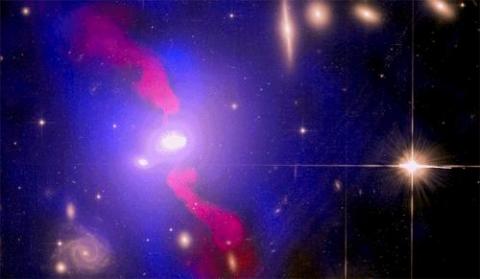Sorting through thickets of stars in elliptical galaxies

Thu, 08/06/2015
A Yale University astronomer has helped untangle the cosmic knots of stars at the center of giant, elliptical galaxies.
Two studies, one led by Yale’s Grant Tremblay on galaxies in the nearby universe and other led by Michigan State University researcher Megan Donahue on galaxies in the more distant universe, are providing new information about why the universe’s largest elliptical galaxies ratchet down their star production despite having plenty of available star-making material. Tremblay’s paper appeared in the Monthly Notices of the Royal Astronomical Society; Donahue’s paper appeared in the Astrophysical Journal.
Using data collected by space telescopes, including the Hubble, and from observatories on the ground, the researchers detect a self-regulating cycle of star births within elliptical galaxies. Jets shooting out of a galaxy’s center control the rate at which surrounding gas cools and falls into the galaxy, almost like raindrops. Their results indicate that galactic collisions and other extreme cosmic events are not always necessary for the creation of showers of new stars.
This article was adapted from the Yale University press release by Jim Shelton (URL below).
